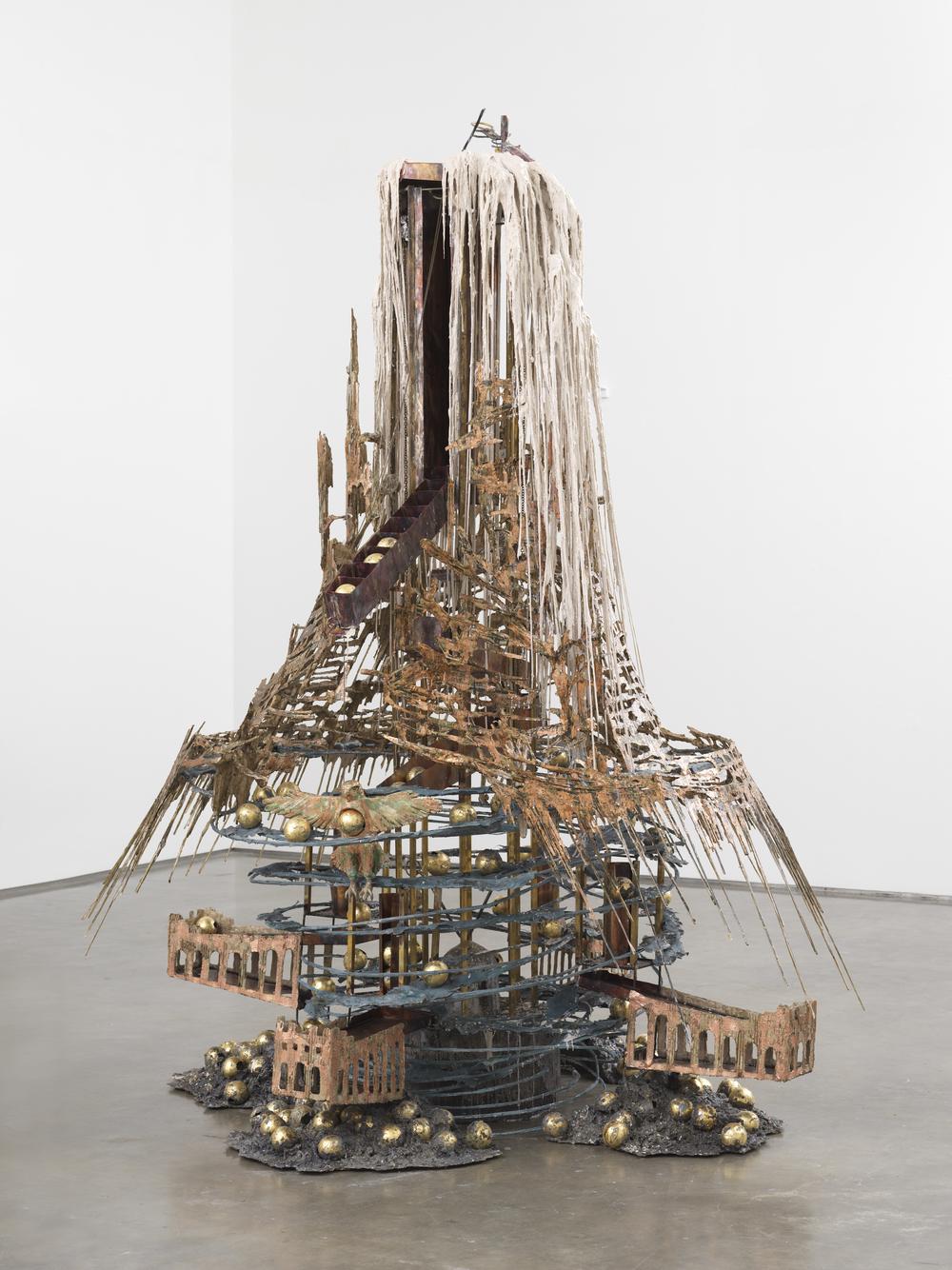Diana Al-Hadid. Measuring Time

Diana Al-Hadid finds inspiration in the classical forms of Western and Islamic civilization, structures like Gothic cathedrals, the Citadel of Aleppo, the Tower of Babel, and thirteenth-century Syrian water clocks. But these original forms are often obscured in her material translations, their grandiose histories submerged in a state of decay; as the artist explains, “the fantasy of restoring the past is deeply engrained in us, but it’s also irrational and it’s impossible.”1 Al-Hadid’s large sculpture The Candle Clock in the Citadel (2017) was inspired by the visionary drawings of a candle clock by thirteenth-century inventor Al-Jazari—a mechanical device outlined in his Book of Knowledge of Ingenious Mechanical Devices (1206) that measures the passage of time using the weight of melting candle wax. Made of dripping polymer gypsum, Al-Hadid’s creation looks both like a ruin of Al-Jazari’s functional timepiece and a fantastical contraption, conveying a sense of “familiarity with something not directly experienced, or a kind of yearning, an almost tactile nostalgia.”2
Diana Al-Hadid, in Rachel Small, “Diana Al-Hadid’s Babylon,” Interview Magazine, February 6, 2014, interviewmagazine.com/art/diana-al-hadid-marianne-boesky. ↩︎
Duygu Demir, “Diana Al-Hadid,” in Vitamin D2: New Perspectives in Drawing, ed. Christian Rattemeyer (London: Phaidon, 2013), 18–19. ↩︎